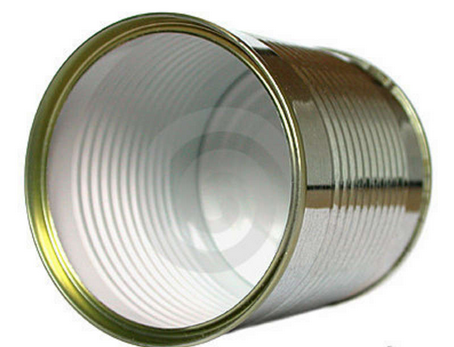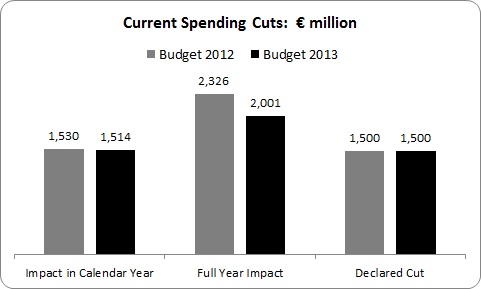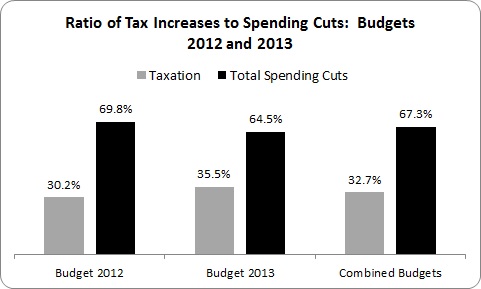Budget 2014: Don't Just Read the Label, Look inside the Tin

So, Fine Gael has caved in to Labour. There will now be only €2.5 billion in fiscal adjustments (read: austerity), not €3.1 billion. A victory for the junior partner or a necessary concession given the general austerity fatigue; regardless the reason, less cuts and taxes. But how can we be sure? Given what has happened over the last two budgets, I would urge caution. By Michael Taft (First published on Notes on the Front).
Measuring a Government’s budgetary package used to be relatively straight-forward. You just added up the tax and the spending measures (whether they were increases or cuts). They can be parsed in two ways – the tax increases and cuts that hit in the calendar year and the total full-year impact. The difference between the two is that in many cases, a tax increase or a spending cut may come in during the year, not at the beginning; this means that it may not be fully felt in the first year.
That’s why it is best to focus on the full-year yield of budgetary measures. Here, I will focus on current spending cuts. In Budgets 2012 and 2013, the Government claimed that it was cutting current expenditure by approximately €1.5 billion in each – or €3 billion over the two years. How does this compare with what the Government actually published in the Expenditure Reports for each budget?

The current spending cuts announced in the budget came to €1.5 billion in the calendar year. This is the basis upon which the Government declared that their fiscal consolidation was €1.5 billion in each year.
However, when you add up the full year impact, the amount of cuts was higher. In Budget 2012, the Government published current spending cuts of over €2.3 billion; in Budget 2013, it was €2 billion.
In other words, the Government has cut more than they admitted to. In the last two years they announced cuts of over €4 billion while claiming it was only €3 billion.
Of course, not all cuts were implemented: in the Health budget, charging private patients the full cost of a bed in a public hospital and reductions in the cost of drugs did not happen. However, to balance this out a number of cuts were announced between budgets (e.g. cuts to home-help hours).
The point here, though, is the presentation of the actual numbers in the budget. The Government used the calendar year impact when the cut should be presented on a full year basis. They have been able to get away with it since they have focused people's attention on the calendar year cost (and because very few went to the trouble of adding up the full-year costs).
Does this matter or is it all a bit of number –grubbing? Well, it does matter. If the Government is actually introducing more austerity measures than they are admitting to, it has a clear economic impact. It also reflects on the transparency of budgetary presentation.
There is also an impact on the ratio between tax increases and spending cuts. For instance, some Ministers claimed that last year the ratio between tax increases and spending cuts was nearly 50:50. This is not the case based on their own budgetary numbers.

In both years, taxation made up only a third of total budgetary adjustments – even last year when it was claimed that taxation made up nearly 50 percent of the total adjustments.
Maybe the fiscal adjustment in Budget 2014 will be closer to €2.5 billion rather than the original €3.1 billion. But if the last two budgets is anything to go by, it is imperative that we look at the actual budget numbers and don’t take press releases and Ministerial claims at face value.
